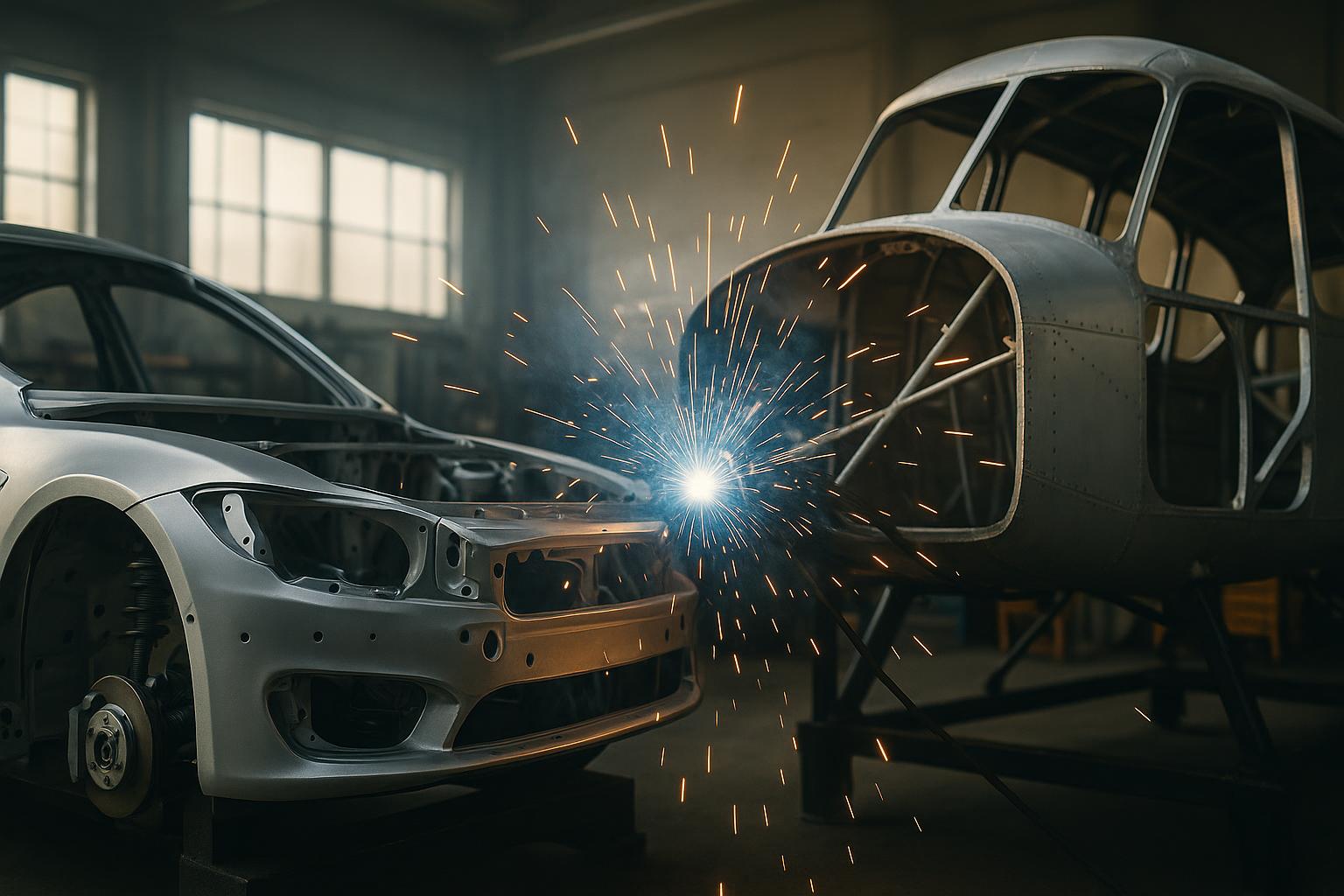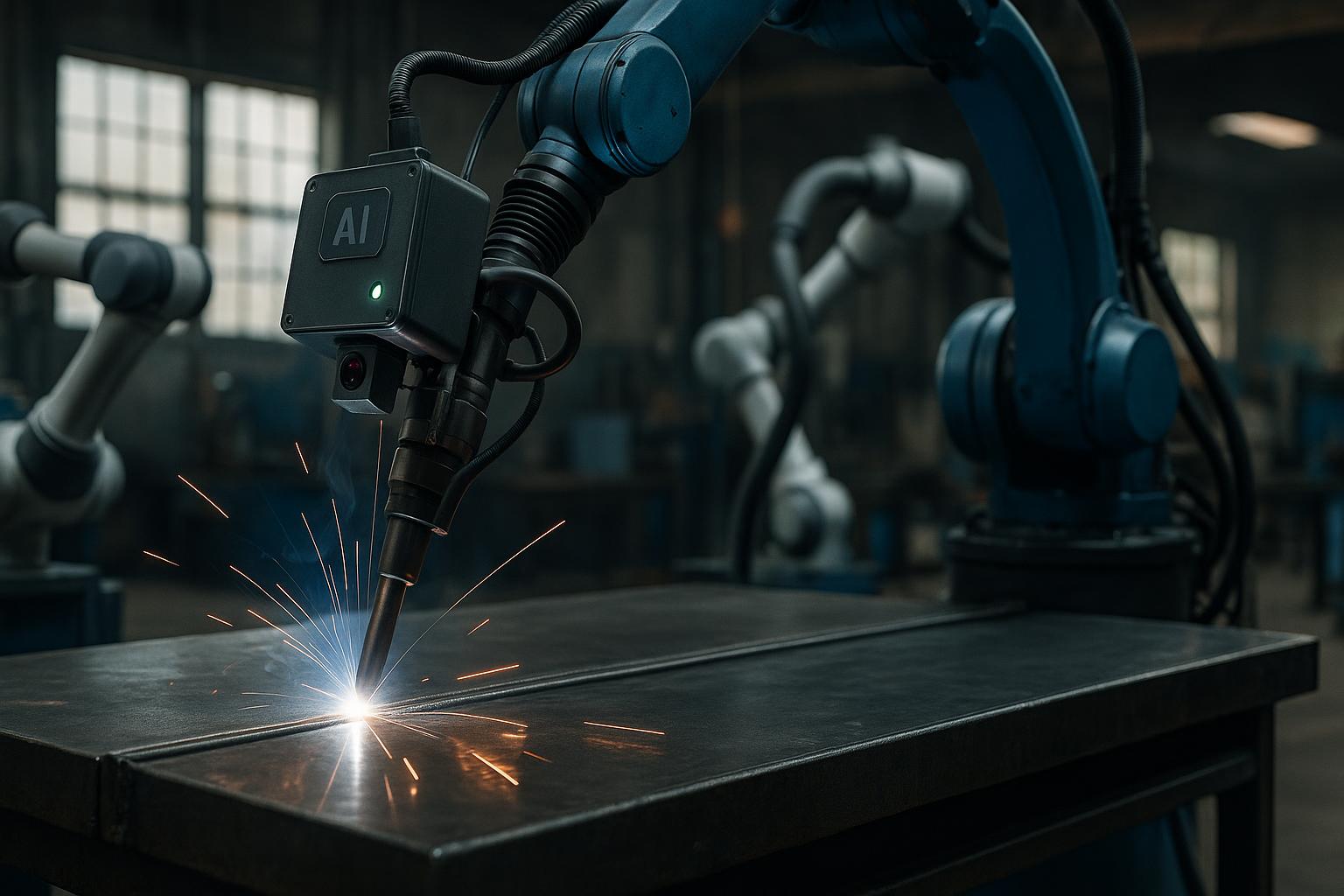Niche Welding Markets: EV Frames to Light Aircraft
Specialized sectors increasingly demand precision, reliability, and certification-backed capabilities. If you run a welding shop, being able to position yourself for EV frame fabrication and light aircraft components can unlock higher-value contracts and steadier work streams. This post breaks down why these niche markets are growing, which welding processes fit best, and how to align your shop with the right certifications and business strategy to win competitive bids.
Understanding the Demand in EV Frame and Light Aircraft Sectors
Two of the most dynamic niche markets today are electric vehicle (EV) frame fabrication and light aircraft structures. For EVs, the frame is not just about strength; it must accommodate battery modules, cooling channels, and evolving crash- and thermal-management requirements. Aluminum and high-strength steel alloys feature prominently, driving demand for precision welds that minimize distortion while preserving conductivity and mechanical integrity. In light aircraft, structural welds must withstand cyclic loading, tempering, and fatigue life expectations over decades. Aluminum alloys such as 6xxx and 7xxx series, and, in some cases, titanium fasteners and skin-to-core joints, require tight process control and high-quality welds to satisfy aviation standards.
The common thread across these sectors is a premium on repeatability, traceability, and documented process qualification. Buyers in EV and aerospace markets don’t just want a weld; they want a weld that fits a larger system with predictable behavior under real-world conditions. That means you should expect to invest in robust quality systems, credible process documentation, and the ability to demonstrate weld performance through qualified procedures and inspection data.
Choosing the Right Welding Processes for EV Frames
Selecting the right welding process for EV frames and light aircraft structures depends on alloy, thickness, joint geometry, production volume, and required quality outcomes. Here are practical guidelines and options to consider:
- Aluminum frame fabrication: TIG (GTAW) is the workhorse for critical joints and cosmetic welds on aluminum; it delivers excellent control for thin materials and complex joint configurations. For higher production rates, fiber laser or hybrid laser-TIG setups can increase throughput while maintaining quality. Friction stir welding (FSW) is increasingly used for large aluminum panels and structural butt joints, offering low distortion and excellent fatigue performance in aerospace and automotive frames.
- Steel frame components: MIG/MAG welding with low-hydrogen consumables works well for structural steel, while preheat and interpass temperature controls help manage distortion on thicker sections. For high-strength steels, consider carefully selected filler metals and heat management to maintain mechanical properties without cracking.
- Battery enclosures and thin-walled sections: Laser welding and high-speed TIG can deliver tight welds with minimized heat input, reducing warpage around battery modules. When gaps or complex seams exist, servo-controlled TIG with precise torch control offers repeatable results.
- Hybrid and automation options: For shops aiming at volume, multi-process cells combining laser, TIG, and robotic handling can unlock consistent output. Automation helps with reproducibility, especially for repetitive welds in frames and panels, while skilled manual welds handle critical corners and fit-up where precision is paramount.
- Post-weld considerations: Certain alloys and thicknesses benefit from post-weld heat treatment or controlled cooling to relieve residual stresses. Plan PWHT if required by your target market or customer specifications to avoid costly rework.
Process selection should drive your equipment investments and operator training. Start with a capability map that aligns alloys, thickness ranges, and joint types you expect to encounter. Then map a path of incremental automation that fits your throughput goals and cash flow.
Certifications and Quality Systems That Win Contracts
Niche markets reward suppliers who can prove reliability and traceability. The right combination of certifications and quality systems signals to customers that you can manage complex programs with confidence. Consider these elements as you build out your qualification plan:
- Quality management: AS9100 is the standard most aerospace and related markets recognize for quality management systems. ISO 9001 can also be a strong foundation if AS9100 isn’t required at this stage. Implement document control, nonconformity handling, change control, and regular internal audits.
- Special processes and aerospace quality: Nadcap accreditation for aerospace special processes (welding, heat treatment, non-destructive testing) is a differentiator for prime contractors and integrators. While obtaining Nadcap takes time, it signals a serious commitment to process capability and supplier quality.
- Welding credentials: AWS Certified Welding Inspector (CWI) or AWS Certified Welding Educator (CWE) credentials for personnel overseeing weld quality help with customer audits. Welder qualification testing per relevant codes (for example, AWS D1.1 for steel, AWS D1.2 for aluminum) documents weld performance and repeatability.
- Technical documentation: Maintain weld procedure specifications (WPS), procedure qualification records (PQR), and welder qualification tests (WQT). Traceability of materials, heat treatments, and welding parameters is essential for bids and post-delivery support.
- Industry standards alignment: While exact standards vary by market, aligning with ASME or ISO mark expectations, aviation material standards, and supplier quality requirements reassures customers about risk management and long-term serviceability.
Certification is not a one-time event. Build a roadmap that pairs initial certifications with ongoing audits and continuous improvement. In practice, customers often review your quality system during early engagement; having a mature quality footprint accelerates negotiations and shortens the path to award.
Capabilities, Equipment, and Shop Positioning
Positioning your shop to win high-value contracts involves more than just owning the latest welding machine. It requires a strategic mix of equipment, processes, people, and processes that align with target markets. Consider these priorities:
- Multi-process capability: A shop that can switch between TIG, MIG, laser welding, and FSW gives customers flexibility to optimize for cost, speed, and quality across different parts of a program.
- Robust fixturing and process control: Jigs, fixtures, and clamping setups that ensure repeatable alignment reduce rework and enable automation. Invest in measurement tools and in-process monitoring to catch deviations early.
- Automation where it makes sense: For common welds on frames and panels, robotics can drive throughput and consistency. For aerospace-grade welds, ensure robots are calibrated to the same precision and that WPS/PQRs cover robotic parameters.
- Material handling and inventory traceability: Track alloys, heat treatments, and lot data. This traceability is especially important for aluminum alloys in EV frames and for any titanium components in aerospace assemblies.
- Skilled workforce: Ongoing training for welders on new alloys, process controls, and inspection methods is a strong differentiator. Pair shop floor training with regular quality training for inspectors and supervisors.
Additionally, consider engaging early with customers on design for manufacturability (DFM). Your experience in fixture design, joint optimization, and heat management can add real value to programs and help you win more competitive bids.
Marketing and Bidding for High-Value Contracts
High-value contracts in niche markets come from trust and demonstrated capability. Use the following tactics to position your shop for success:
- Showcase case studies: Document successful projects with similar materials, joint types, and strength requirements. Include data on defect rates, cycle times, and any productivity gains from automation.
- Build a capability portfolio: A clear summary of alloys, thickness ranges, welding processes, and certification statuses helps procurement teams short-list candidates quickly.
- Engage in early supplier qualification: Participate in supplier qualification questionnaires and provide all requested quality data, WPS/PQRs, and nonconformance histories to reduce risk for buyers.
- Prototyping and pre-production runs: Offer small-scale prototypes or pre-production runs to validate weld quality and process stability before full-scale production. It’s a powerful way to de-risk contracts with high technical complexity.
- Partnering and subcontracting: For larger aerospace programs, act as a trusted sub to a prime contractor. A track record of on-time, defect-free welds makes it easier to qualify as a preferred supplier for subsequent programs.
Finally, price is important, but value is king. Demonstrate total cost of ownership reductions from tight process control, reduced rework, shorter lead times, and robust post-weld inspection that reduces field issues. A strong value narrative often wins contracts that competitors can’t clearly justify.
Risk, Safety, and Compliance in Niche Markets
Niche markets demand a disciplined approach to risk management. Infractions or nonconformances in EV frame or aerospace work can lead to costly recalls, supplier audits, or program delays. Practical steps to reduce risk include:
- Maintain rigorous safety programs: PPE, training, and hazard analyses tailored to aluminum and high-strength steel welding, including fume control and welding fumes management for multi-shift operations.
- control welding parameters: Use validated WPS and monitor interpass temperatures, heat input, and shielding gas coverage to prevent cracking and porosity, especially on aluminum alloys.
- Record-keeping discipline: Document weld maps, inspection results, and nonconformance trends. Use digital traceability wherever possible to simplify audits.
- Continuous improvement: Implement corrective action systems to address recurring weld defects or process drift. Regular management reviews help keep improvement initiatives on track.
By building a culture of safety, traceability, and continuous improvement, your shop becomes a low-risk partner for customers with multimillion-dollar programs and demanding schedules.
Key Takeaways
- EV frame and light aircraft markets reward precision welds, low distortion, and certified processes backed by traceability.
- Invest in a balanced mix of processes (TIG, MIG, laser, FSW) and consider automation to boost throughput while maintaining quality.
- Aligned quality systems (AS9100 or ISO 9001) and aerospace- or industry-specific certifications (Nadcap, CWI) can dramatically improve bid success and program stability.
- Strong capability documentation, case studies, and proactive supplier qualification reduce risk for prime contractors and accelerates contract awards.
Conclusion
Niche welding markets are both challenging and rewarding for shops that pair the right processes with solid quality systems and credible certifications. By understanding the demands of EV frames and light aircraft structures, selecting the appropriate weld technologies, and presenting a compelling, well-documented capability package, you can position your shop to win high-value contracts and grow with the sectors that are shaping the future of mobility and aviation.



